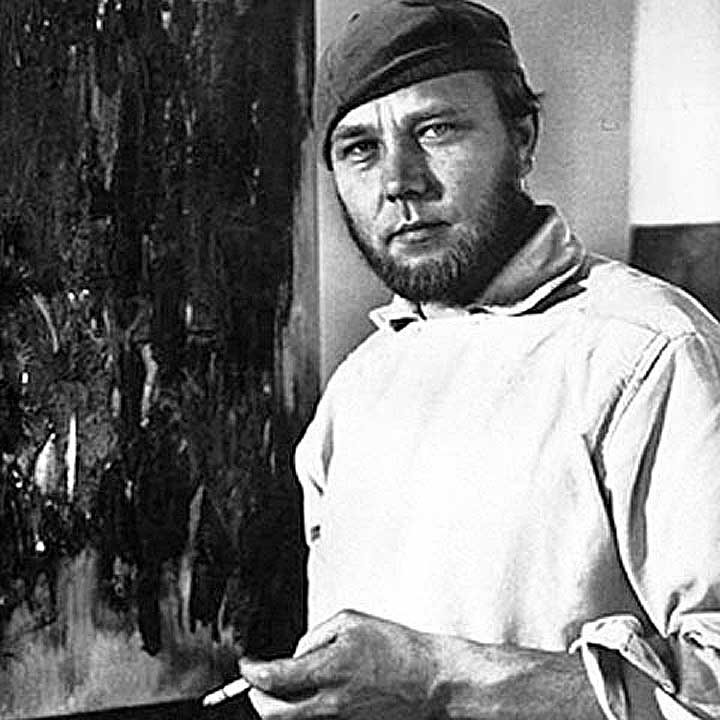Reinhold Koehler

To commemorate Reinhold Koehler (1919 – 1970)
Reinhold Koehler is mainly known as the inventor of decollage and contre-collage. He was born in Dortmund on 28 December 1919.
As a normal German boy, Reinhold Koehler started a commercial apprenticeship. He was then drafted into the Second World War as a soldier. In 1941/1942, as he was brought back to Dortmund while wounded, he made his first watercolours in the midst of war and depression. At the end of the war in 1945, Koehler began to paint as an autodidact as a visual artist, in Altenseelbach, in the county of Siegen. He embarked on experimenting with different materials: Washing, rubbing, engraving, scratching, tearing, engraving etc. to achieve something revolutionary and fantastic.
- During the war he composed some poems, compiling them in a collection of "Poems up to 1950".
- In 1949 Reinhold Koehler established his first studio in Altenseelenbach, in 1950/51 in Neunkirchen, then in 1952 in Eiserfeld.
- In 1951 Reinhold Koehler created his first wrinkled works and he turned to sand as a material in 1956-57 to create "matter" paintings.
- Reinhold Koehler had solo exhibitions in Siegen, Düsseldorf, Kassel and Frankfurt in 1958 before moving to Paris.
It was around this time that the official designation of his works emerged, which were henceforth known as: 'Décollages purs', 'Décollages gravés' and 'Object décollages'. During 1959, Reinhold Koehler began experimenting with fire and created a series of "Décollages brûlés" - paper blackened by the imprint of heated metal, mostly forks. That same year, the distinguished writer and philosopher Max Bense, who was a friend of him, published a first article on Koehler's "Décollages".In 1953 the artist relocated to the city of Siegen. He set his studio up in the Dicken Turm des Unteren Schlosses. This building is well-known from the people of Siegen, but also to the inhabitants of the Siegerland. There, in his tower, he started to create his first non-representational compositions. Following this idea, he pursued in this movement with the Beginning of the Contre-Collages (paintings on glass) and the objects taken off in bottles, plates and insulators around 1963.
Reinhold Koehler once confessed in an interview with the Siegener Zeitung newspaper: "When I saw the destroyed Russian cities, I realized for the first time that no form can be destroyed without another being created". Reinhold Koehler was involved in the aesthetics of "non-beauty" in its conventional sense, the beauty of what is destroyed. Within a few years, Reinhold Koehler zealously expanded his means of expression and found a pictorial language that was sometimes radical, but often also poetic. In the course of his career, he travelled a lot: he went to Italy, France, Spain, etc. His pictorial genius earned him a fame that was not to be missed throughout Europe for his technique.
In 1966, Reinhold Koehler received a grant from the Aldegrever company to work at the Kätelhön printing works in Wamel on Lake Möhne. From 1968 he taught at the University of Applied Sciences in Siegen.
The artist died in Siegen on 24 April 1970.
Reinhold Koehler was of considerable importance to Siegen, as Wolfgang Suttner, one of the founders of the Siegen Art Association, noted: "Koehler is and remains an important initiator of modern art who, over and above his work for the Rubens Prize, was an important cultural-political driving force in Siegen."








